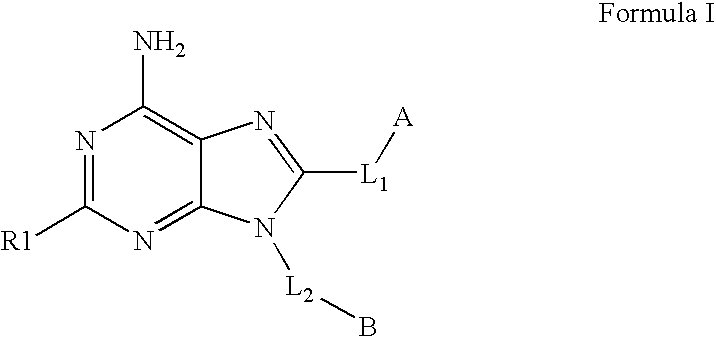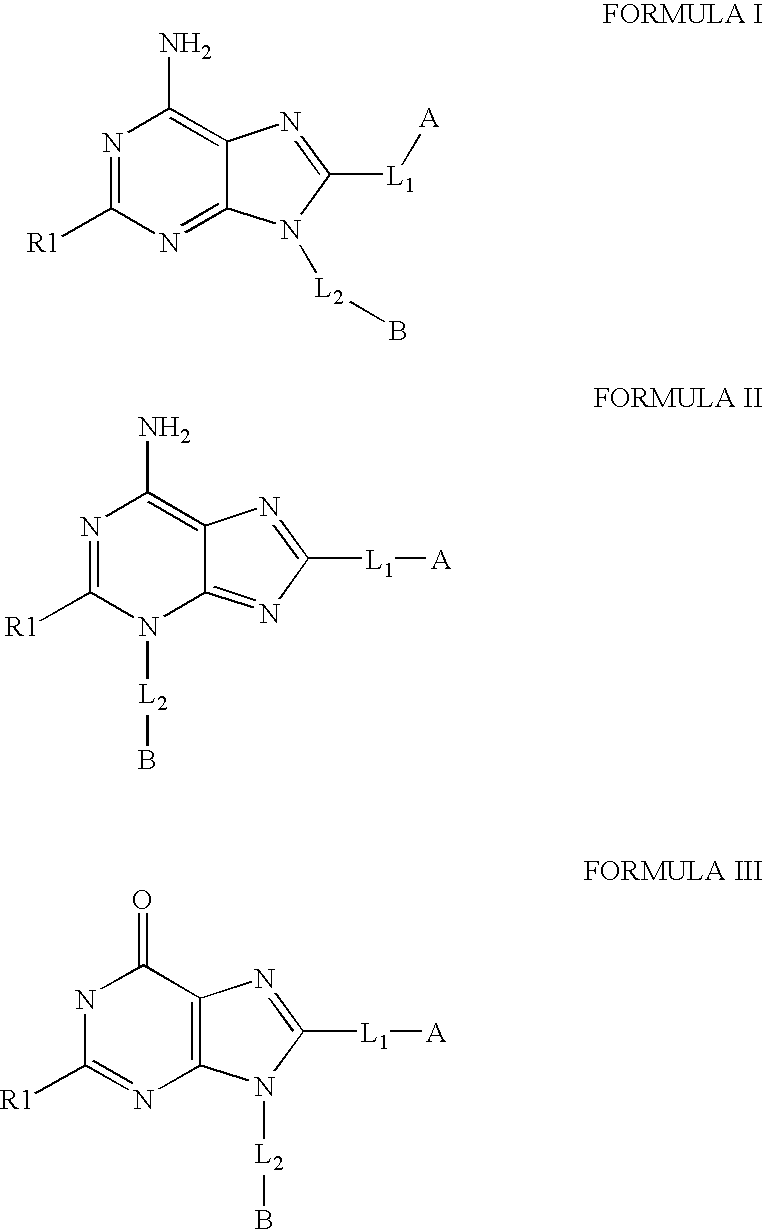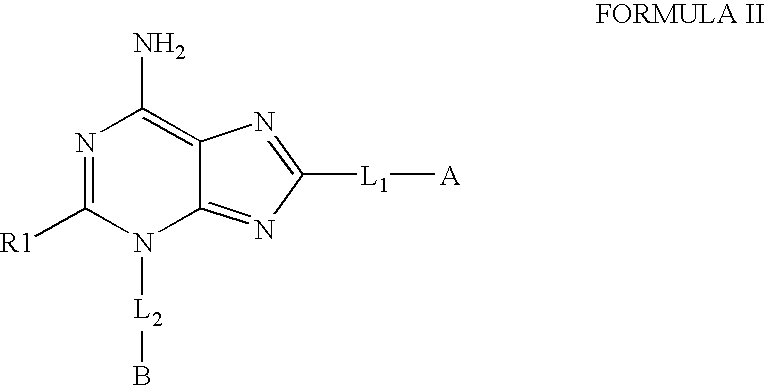Therapeutic compounds and their use in cancer
a technology of therapeutic compounds and active ingredients, applied in the field of compounds, can solve the problems of many cancers remaining uncurable, untreatable, and/or resistance to standard therapies, and achieve the effects of reducing the risk of cancer, and reducing the effect of chemotherapy
- Summary
- Abstract
- Description
- Claims
- Application Information
AI Technical Summary
Benefits of technology
Problems solved by technology
Method used
Image
Examples
examples
Chemicals were purchased from standard commercial vendors and used as received unless otherwise noted. Otherwise their preparation is facile and known to one of ordinary skill in the art, or it is referenced or described herein.
Abbreviations are consistent with those in the ACS Style Guide. “dry” glassware means oven / desiccator dried. Solvents were ACS grade unless otherwise noted. Analytical TLC plates (Silica Gel 60 F254, EM Science, Gibbstown, N.J., or Merck # 5715) were used to follow the course of reactions, and the MPLC system used for purifications was from Isco (Foxy Jr fraction collector, UA-6 detector), using Isco silica gel flash columns (10 or 40 g). 1H NMR spectra were recorded on a Varian Mercury 400 MHz instrument and chemical shifts are expressed in parts per million (ppm, δ) relative to TMS as the internal standard. Mass spectra were obtained on a Thermo Finnigan LCQ-Deca (injection volume 5 uL, XTerra MS-C18 3.5 μm 2.1×50 mm column, XTerra MS-C18 5 μm 2.1×20 mm gua...
examples 1 and 2
8-(2,5-Dimethoxy-phenylsulfanyl)-9-phenethyl-9H-purin-6-ylamine and 8-(2,5-dimethoxy-phenylsulfanyl)-3-phenethyl-3H-purin-6-ylamine
A mixture of 8-(2,5-dimethoxy-phenylsulfanyl)-9H-purin-6-ylamine (0.050 g, 0.165 mmol), (2-Bromo-ethyl)-benzene (0.032 g, 0.165 mmol), and Barton's base (3.00 mmol) in DMF (1.3 mL) was heated at 90-100° C. for 6-15 h. The reaction mixture was then allowed to reach ambient temperature. After removal of solvent under reduced pressure, the residue was purified by preparative HPLC and isolated via lyophilization to give the N-9 isomer and the N-3 isomer. 8-(2,5-Dimethoxy-phenylsulfanyl)-9-phenethyl-9H-purin-6-ylamine: Yield 9.0%, 1H NMR (DMSO-d6) δ 8.18 (s, 1H), 7.43 (bs, 2H), 7.26-7.16 (m, 3H), 7.04-7.00 (m, 3H), 6.85 (dd, J=8.8, 4.0 Hz, 1H), 6.45 (d, J=2.8 Hz, 1H), 4.37 (t, J=7.2 Hz, 2H), 3.74 (s, 3H), 3.60 (s, 3H), 2.97 (t, J=7.2 Hz, 2H); LC-MS (MH30 ) 408.1. 8-(2,5-Dimethoxy-phenylsulfanyl)-3-phenethyl-3H-purin-6-ylamine: Yield 8.0%, 1H NMR (DMSO-d6) δ 7...
examples 3-223
listed below were prepared analogously to the procedure described for examples 1 and 2 and are isolated as a trifluoroacetate salts after preparative HPLC purification.
PUM
 Login to View More
Login to View More Abstract
Description
Claims
Application Information
 Login to View More
Login to View More - R&D
- Intellectual Property
- Life Sciences
- Materials
- Tech Scout
- Unparalleled Data Quality
- Higher Quality Content
- 60% Fewer Hallucinations
Browse by: Latest US Patents, China's latest patents, Technical Efficacy Thesaurus, Application Domain, Technology Topic, Popular Technical Reports.
© 2025 PatSnap. All rights reserved.Legal|Privacy policy|Modern Slavery Act Transparency Statement|Sitemap|About US| Contact US: help@patsnap.com



